Mandevilla (Mandevilla spp.) is a heat-tolerant vine according to the University of Florida and is far too beautiful a plant to not do everything in your power to get it to bloom.
In this article, I discuss some pitfalls that might stop the plant from growing/showing its full splendor based on my personal experience.
Table of Contents
Mandevilla Not Blooming
The reason most often associated with non-blooming Mandevilla is low-temperature conditions. Other causes include poor soil drainage, the wrong watering, the wrong kind of soil, the wrong kind of fertilizer, the vines being the wrong age and placing the plant in a place not exposed to sunlight.
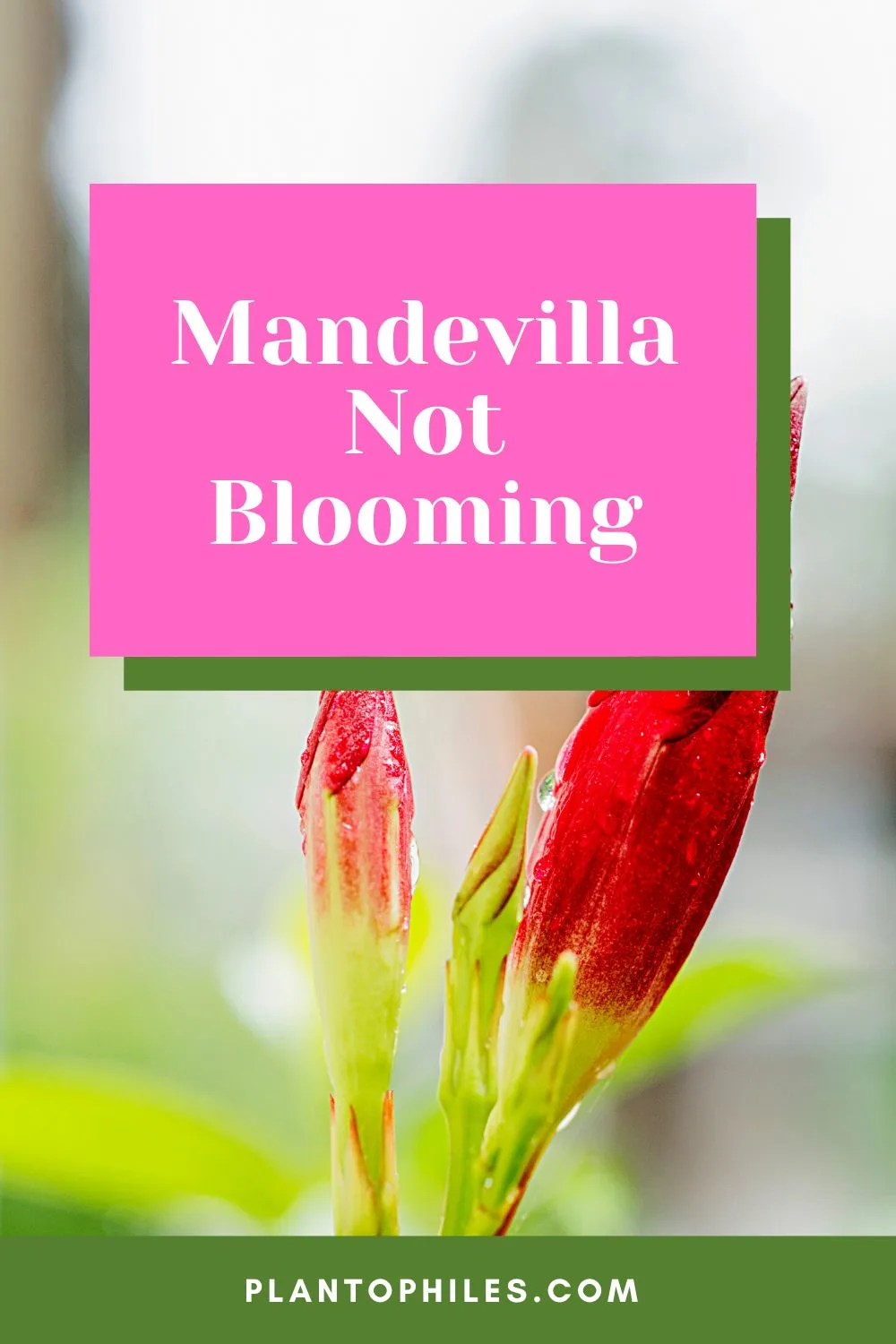
6 Reasons Why Your Mandevilla Might Not Be Blooming
1. Too Low Temperatures
You need to keep your Mandevilla in overnight temperatures greater than 60°F or 16°C (65°F is better / 18°C) to compel it to bloom.
These plants are susceptible to low temperatures and will not tolerate temperatures cooler than 40°F for any length of time. In fact, a single frost will kill them.
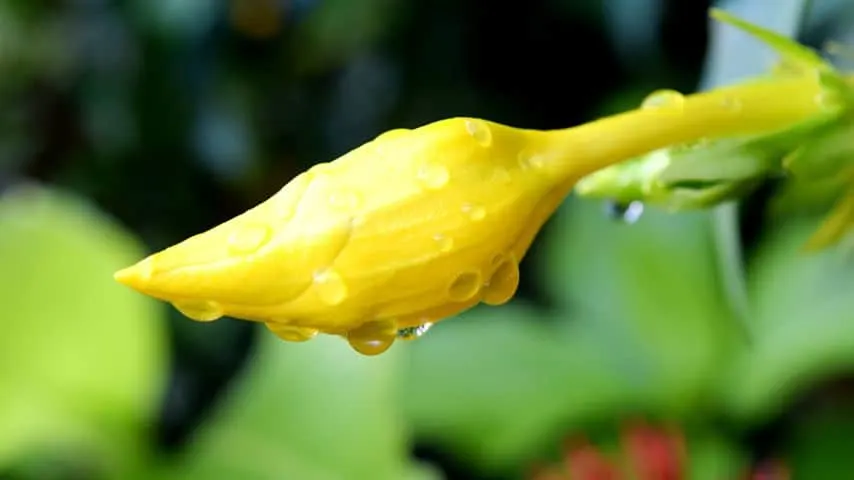
A fully grown Mandevilla is between 10 and 15 feet tall, so even if potted, the plant won’t lend itself easily to being transferred inside during cold snaps.
The solution is, therefore, to practice “prevention is better than cure” and only grow this stunning vine in an area where you know it will do well.
I have met some firm-jawed stubborn individuals who dig up their vines and winter them indoors! Apparently, it is possible because Mandevilla’s root system is efficient enough to cope with the disruption.
Me? Thanks, but no thanks. I am a great believer in living where the plants I grow can do well on their own.
I’ve never seen it myself, but some gardeners swear that they routinely manage to get their plants to bloom over winter indoors with the right kind of indoor lighting.
Technically, there’s no reason the plant shouldn’t if it is in perfect condition, so maybe one day I will give a shot to wintering Mandevilla indoors.
2. Poor Soil Drainage
Mandevilla does not like heavy, soggy soil, and it will definitely not bloom properly. Instead, keep the soil well drained to give the plant a fighting chance to flower correctly.
Although Mandevilla thrives in virtually any well-drained soil, its superstar medium is an equal admixture of builder’s sand, potting soil, and peat moss.
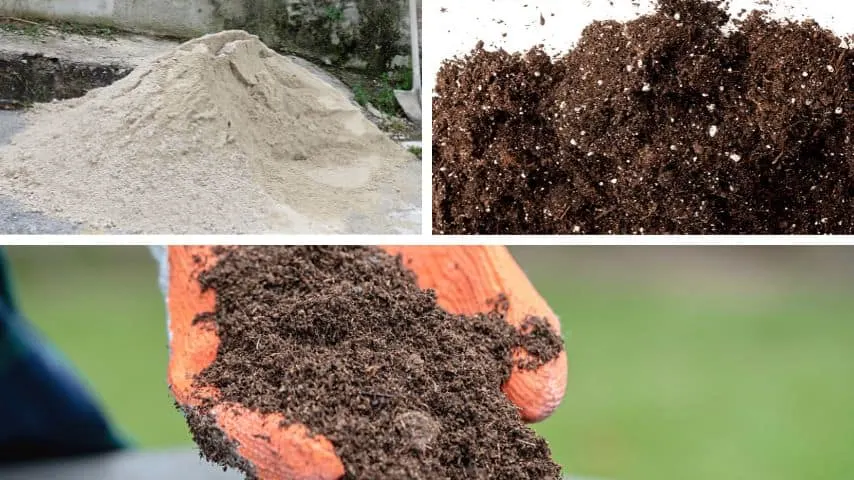
If you can provide your Mandevilla with this medium and keep it well-drained, suitably watered, and fed, I think you’ll regularly get the most amazing flowers from your happy plant.
3. The Wrong Amount of Water
As often remarked, Mandevilla has a highly efficient root system that stores water. This means you can give the plant a good dousing but only do so infrequently.
Keep an eye on your Mandevilla’s leaves; as long as they are glossy, they don’t need any more water.
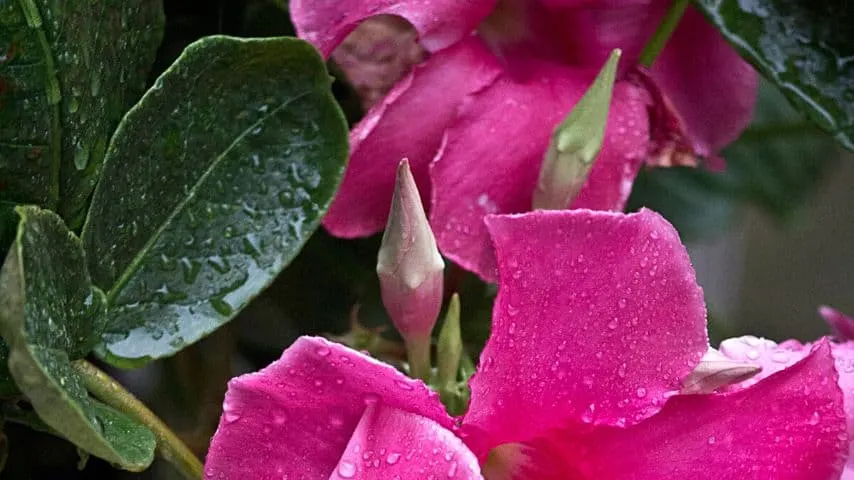
As soon as its leaves appear dull and limp, give the plant another good drenching (into the soil, not onto the plant).
Maintain this routine to keep your precious adequately hydrated.
4. The Wrong Kind of Fertilizer
Mandevilla takes advantage of the right kind of fertilizer during its growing season to bloom new flowers, which is all well and good.
However, if you use the wrong fertilizer, you will find that while the plant’s leaves grow a healthy dark green and virtually burst with health, the plant will give you few, if any, flowers.
This is because nitrogen-rich fertilizer is excellent for greenery but lousy for flowers. Instead, your Mandevilla needs high-phosphorous fertilizer to encourage and support the growth of flowers.
Depending on what your experience teaches you, choose NPK fertilizers with a ratio of 10-20-10 or 15-30-15. (You probably notice that phosphorous is twice the quantity of the other components, and this is what you want.)
You should feed your plant every fortnight during the growing season (late spring till nearly the end of autumn).
You can modify the fertilizer content still further if you notice that your leaves are doing splendidly, but the plant steadfastly refuses to produce flowers. This is surefire evidence that your nitrogen soil levels are too high.
5. Your Mandevilla is Too Young
Flowering is no easy business for any plant, and Mandevilla is no different. This vine’s splendorous flowers bloom on mature plants and rarely occur in the first year of its vining.
Although you might be impatient, I feel you might have to wait a couple of seasons before you think you have a problem with a non-flowering Mandevilla.
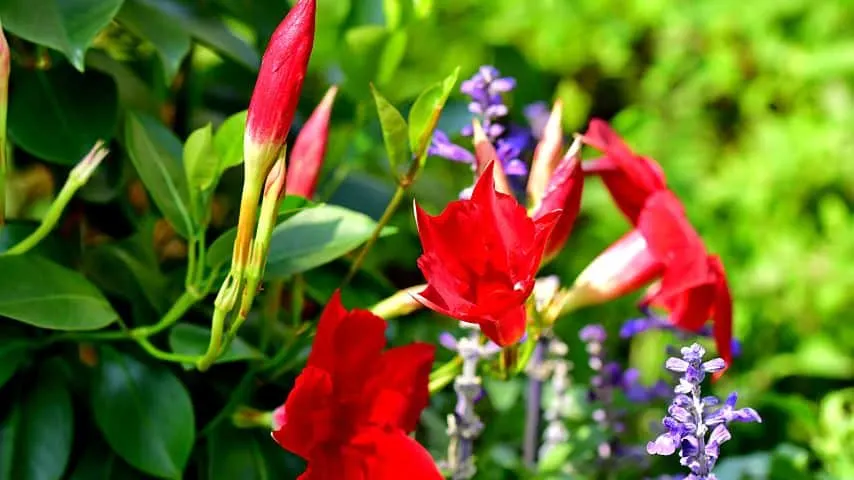
Another time-related issue that may prevent your Mandevilla from blooming is if you have allowed a newly transferred plant sufficient time to establish itself in its new location.
It is possible that you may have to train the transplanted plant and patiently wait for nature to take its course.
6. The Wrong Amount of Sunlight
To produce its glorious flowers, Mandevilla needs adequate sunlight. Like many other plants, Mandevilla thrives best when exposed to the morning sun.
The plant prefers shade in the afternoon, but it still needs eight hours of sunshine throughout the day if it is to produce that wondrous spray of flowers you’re no doubt hoping for.

I advise my customers to place Mandevillas where they get four, five, or six hours of sunlight by midday, then get shade from the harsh noonday sun until they can catch a few more rays in the late afternoon.
This is easier said than done, but I have often found corners under eaves an ideal location.
If push comes to shove and you can’t find the perfect location, settle for somewhere where the plant gets the most morning or afternoon sunlight. Just make sure it doesn’t get blasted by the hot midday sun because that could be devastating.
When planning to situate your Mandevilla, remember to plan against the summer sun. Some people forget when placing their Mandevilla in spring, autumn, or winter and then get a nasty surprise in summer.
Frequently Asked Questions about Mandevilla Not Blooming
How long should my Mandevilla flower?
Mandevilla flowers late in spring/early summer and stays in bloom all the way until late autumn. In USDA hardiness zones 8 and 9, frost can – and will – kill these magnificent plants. If you’re a Mandevilla gardener, live in hardiness zones 10 and higher as these plants will thrive there.
Does Mandevilla bloom all year round?
Some gardeners claim that they winter their Mandevilla indoors and, with daylight lamps, a humid atmosphere and optimal night-time temperatures of no less than 65°F, they get them to bloom. This suggests that Mandevilla can bloom all year round – but only in highly specific artificial environments.
Conclusion Mandevilla Not Blooming
Mandevilla fails to bloom for the following reasons:
- Incorrect sunlight
- Watering issues
- Poor soil drainage
- The wrong soil
- The wrong or no fertilizer
- Low temperatures

Daniel has been a plant enthusiast for over 20 years. He owns hundreds of houseplants and prepares for the chili growing seasons yearly with great anticipation. His favorite plants are plant species in the Araceae family, such as Monstera, Philodendron, and Anthurium. He also loves gardening and is growing hot peppers, tomatoes, and many more vegetables.


